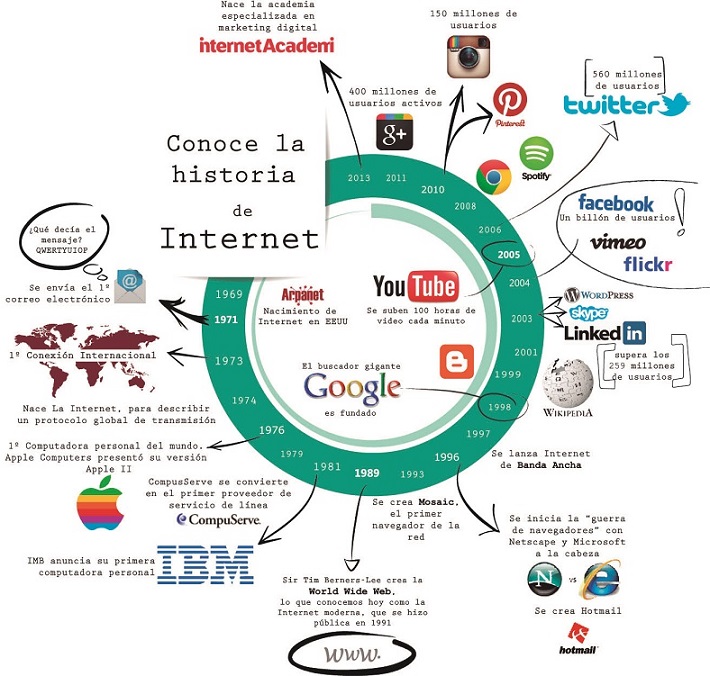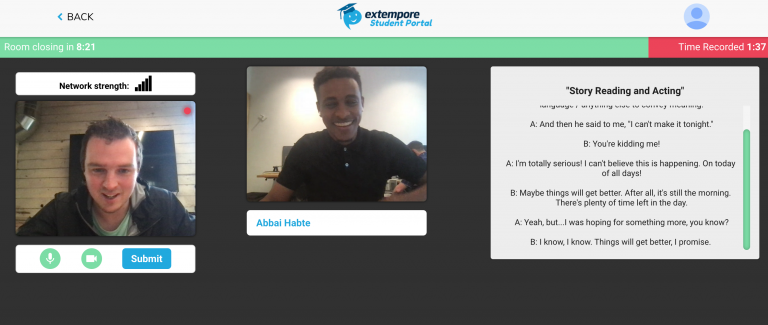
Using Extempore to Practice and Assess the Three Modes of Communication
On Extempore, instructors have carte blanche to create any type of language practice or assessment they desire. Spontaneous speaking? No problem. Interactive listening? Easy. Reading comprehension? Piece of cake. With this degree of flexibility at their fingertips, teachers are well equipped to create high-quality interpersonal, interpretive, and presentational practice in no time.
Still, our artistic ambitions can sometimes get the best of us, and we often end up stuck spending too much time trying to craft the perfect assessment. We at Extempore recognize these concerns, so we write out blogs like this for your inspiration and guidance. Below, learn about the three modes of communication, ways to practice / assess them on Extempore, and some free templates and tasks for you to import directly into your classes.
Feel free to watch the webinar below from our 2021 Summer PD series for more information.
Interpretive communication
If you follow a comprehensible input (CI) based teaching approach, you know that input is that foundation of our students' language skills. It makes sense then to list interpretive communication as the first of the three modes for our review. Our students have to know what they are hearing and reading before we can ask them to produce that same language. For our sake, interpretive practice involves comprehending input-based texts.
Still, output remains the target for an overwhelming amount of language practice today. Renandya (2013) mentions that "many language programmes today give learners a lot of output-based practice but deprive them of the opportunity to engage in meaningful input-based practice." From one angle, it's an understandable position. Students take language classes to communicate (among other skills), and communicative competence is preached throughout the language teaching spectrum. Consider the student's perspective too (to which output-heavy approaches cater): "I can't wait to learn how to speak German!" vs "I can't wait to learn how to interpret authentic German texts!"
Yet, as mentioned, there is no output without input first. Let's look how to approach basic interpretive practices and assessments on Extempore, divided between listening and reading.
Interpretive Listening
Arguably the toughest of the four skills, listening also serves as the foundation of linguistic proficiency, "the concrete basis for the complete language proficiency" (Renukadevi, 2014). Anyone who has learned a new language, though, will tell you how difficult listening can be. From a teaching perspective then, we have to start small.
Formative assessments framed around monologues and/or conversations can be used for low-stakes practice. After adding in your audio to the Extempore prompt, consider the following question types for gauging your students' comprehension levels.
- Consider who / what / when / where / why.
- What the speaker is talking about?
- Who is the speaker? (dentist, student, athlete, poet, etc.)
- When might this speaker be talking (in the morning, on New Year's, on a Friday afternoon, after work, etc.)?
- Where might the speaker be? (at work, at Target, in the middle of the ocean, online, at the post office, etc.)
- Why might the speaker be talking about this? (to buy something, to make an announcement, to profess their love, to convince someone of something, etc.)
- What is the speaker's tone / mood in the audio?
- What predictions can be made on what might happen next / what happened before?
- What is the attitude of each speaker towards the other? (dialogues)
- What is the nature of the conversation? Is there a problem? What are the speakers trying to accomplish? (dialogues)
Note that these questions can be asked as multiple choice, or they can be open-ended; it's entirely your call. Which method you choose will likely depend on how much scaffolding you want to provide students.
Outside of questions, consider having students sequence (putting events in order, can also be used in line with dictation) or continue the conversation, writing what happens next.
TIP: when assessing comprehension of an input-based sources, lean on using students' L1 for questions and answers. This way students can't simply choose answers in the TL based on what they heard.
Interpretive Reading: Task Students With Authentic Resources
Authentic resources make for valuable tools when practicing and assessing interpretive reading skills. What's more, they are perfect texts for creating authentic, input-based tasks. Have students view target language menus to order food and mediate for a friend who doesn't speak the TL. Share TL advertisements with students to see what they can infer from the featured product. Even share TL social media posts and infographics to introduce how the TL is used online, and what role the language plays in the target culture online.


A shuttle schedule and an infographic of the internet in Spanish -- perfect authentic resources for novice learners.
Just like with listening, interpretive reading is much more than interpreting typical written texts like stories or poems. Anything that we read can be used as a target text, and sometimes things as common as street signs and social media posts can be more appropriate for your students than something text-heavy like a short story. Also, when assessing reading, go beyond the main idea questions, and encourage students to illustrate what they can infer from the text.
Interpersonal Communication
Interpersonal speaking is a hallmark of world language classrooms. Practicing interpersonal speaking remains relatively simple in most classrooms. Group work, 'speed dating,' and other related activities make creating situations for interpersonal speaking easy and efficient. Still, assessing interpersonal speaking remains an elusive task for many a teacher. After all, a teacher can only be in one place at a time, and most don't have the time to observe dozens of groups throughout multiple classes, taking up precious class time in the process.
If you've been following our updates recently, you already know about one of our most recent features, Extempore Sync. With Sync, teachers can group students in breakout rooms, host prompts with audiovisual media, and give unique feedback after viewing recorded, synchronous student conversations.
Sync checks all the boxes for both practicing and assessing interpersonal communication, making this a great option language teachers, regardless of what learning environment you find yourself in. For the sake of brevity and repetition, I'll defer to our in-depth blog on using Sync for interpersonal speaking, but I'll close this section with a short list of ways to use Sync for practice and assessment. As you read these, consider other ways to liven up interpersonal tasks, like incorporating information gap tasks.
- Host images / videos and ask student groups to make a decision together based on what they see (weather forecast, neighborhood posting, movie postings, menu, course catalogue). (practice or assessment)
- Provide a script for students to read to practice cadence, enunciation, and using emotion in the target language. (practice)
- Pose real-world problems for students to solve together (friend can't come to a party, out of toilet paper, sick roommate, etc.). (practice or assessment)

Presentational Communication
Presentational speaking and writing both center on producing language for a specific audience, with the goal for students to "inform, explain, persuade, and narrate,", as opposed to negotiating meaning in interpersonal communication. Practicing and assessing presentational communication is a great place to apply task-based assessments and practice for students.
Presentational Writing
Written tasks in the presentational mode come in all shapes and sizes. Students can...
- compose social media posts (inform)
- write emails to future bosses (persuade / explain)
- tell a story (narrate)
- write diary entries on a vacation (narrate)
- give a friend instructions, or (explain)
- introduce themselves to a future roommate (inform)
Regardless of what they are doing, it's important to remember that for more lengthy written tasks like those above, students need significantly much more time than they do for spoken tasks. Think about how much time it takes you to craft the perfect email (or Facebook / Twitter post); there's the process of knowing what you want to say, putting it into words, then going back and perfecting it. It's not easy, even in our L1.
When it comes to hosting these on Extempore then, give your students ample practice before adding timers and making these summative assessments. Oh, and once you do, you can rest assured that these assessments are safe; with Safe Mode, students cannot paste any text from an external source into a response box.
Presentational Speaking
Many of the examples listed under presentational writing can be applied to presentational speaking tasks as well. Others can be adapted for spoken settings, for example changing diary entries to vlogs, or taking written stories and adapting them in 'live' versions on a social media platform.
On Extempore, presentational speaking tasks are best practiced routinely: assign daily / weekly practice for students to rehearse and build confidence in the target language and target vocabulary / structures. As they grow confident and their abilities increase, gradually add timers and remove some scaffolding to gauge their true language levels.
Following up: Feedback, Grading, and Student Review
Whatever mode students are practicing, be sure to give feedback to help them track their progress. Moreover, encourage them to review their responses on the student portal to learn from your feedback, reflect, and track their linguistic progression.
Works cited:
Renandya, W. A. (2013). The role of input- and output-based practice in ELT. In A. Ahmed, M. Hanzala, F. Saleem, & G. Cane (Eds.), ELT in a changing world: Innovative approaches to new challenges (Ch. 3, pp. 1–12). Newcastle, UK: Cambridge Scholars Publishing.
Renukadevi, D. (2014). The role of listening in Language Acquisition; the Challenges & Strategies in Teaching Listening. International Journal of Education and Information Studies. 4 (1), 59-63.



